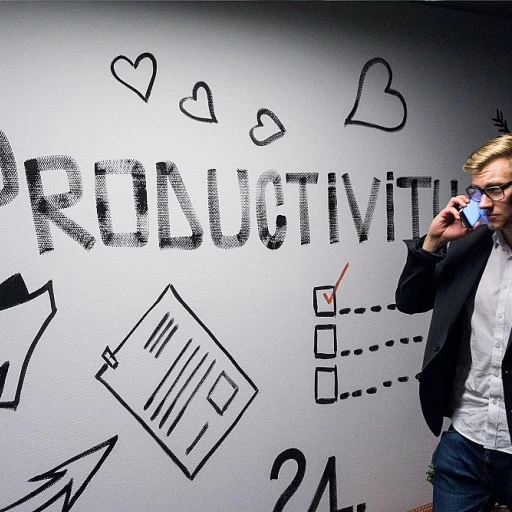Understanding Ageism: A Growing Concern in Work Tech
Ageism in Work Tech: An Emerging Challenge
Ageism, a form of discrimination based on age, is becoming an increasingly pressing issue in modern work environments, particularly within work tech. As companies continually innovate and seek to stay ahead of trends, there is a growing preference for younger employees who are perceived to be more in tune with new technologies and trends. However, this bias overlooks the vast experience and expertise that older workers bring to the table. In the tech industry specifically, age discrimination can manifest in various ways, ranging from recruitment practices to internal company policies. For instance, job postings may implicitly favor younger individuals by emphasizing the need for 'digital natives' or preferring candidates with only a few years of experience. This could potentially discourage older candidates from applying, thereby contributing to discrimination in employment opportunities. The gaps between older employees and their younger counterparts in work tech are often exacerbated in fast-paced environments where continuous learning and adaptability are highly valued. Unfortunately, this can result in an age group being undervalued and underutilized, leading to a neglect of the unique perspectives and skills that older adults can offer. Legal frameworks exist to protect against age discrimination, yet the subtleties of ageism in the workplace can make it difficult to identify and address. As age bias continues to be a concern, it's imperative for both employees and employers to recognize and mitigate these biases. By embracing diversity in age and fostering an inclusive environment, organizations can improve overall creativity, productivity, and employee satisfaction. Moreover, HR chatbots are playing an evolving role in shaping workplace culture and providing tools to combat age-based discrimination. Employers are encouraged to utilize technology as an ally in promoting fairness and inclusivity across all age groups.Subtle Signs of Age Discrimination
Spotting Under-the-Radar Discrimination
Age discrimination in the workplace often flies under the radar, being embedded in subtle everyday interactions. For many older workers, these veiled instances of discrimination can feel isolating and frustrating. Decoding these often-unspoken biases is crucial to fostering an inclusive work environment where all employees thrive, regardless of age.
One subtle form of ageism manifests in how job opportunities are communicated within a company. It's not uncommon for younger workers to hear about new projects or advancement prospects more frequently during casual interactions or informal meetings. Whereas, older employees might find themselves overlooked, with less access to word-of-mouth opportunities.
Another example of age-based prejudice is assuming older adults are not tech-savvy. Employers may subconsciously bypass older workers for roles involving new technology, reinforcing stereotypes rather than evaluating each employee's actual competencies and potential. These microaggressions can erode confidence and restrict career development for older age groups.
The language used in the workplace can also perpetuate age bias. Terms like "energetic" or "fresh" ideas are often subtly equated with being younger. This linguistic coding perpetuates the stereotype that younger employees are more innovative, despite older employees having a wealth of experience and insights to contribute.
Recognizing these examples of subtle discrimination age in the workplace is the first step towards fostering an equitable environment. Employers must actively work to identify and eradicate these biases, promoting a culture where all ages are valued equally. For further insights into maintaining a respectful workplace and safeguarding personal data privacy across age groups, check our guide on navigating privacy in the AI era.
Overt Examples of Age Bias
The Manifestations of Age Bias in Professional Settings
Recognizing the overt examples of age bias in the workplace is crucial to understanding its full impact. This form of discrimination often manifests in clear and undeniable ways that disadvantage older workers, targeting them based solely on age. Here, we delve into how ageism can openly affect employment opportunities and workplace dynamics. One common example of discrimination against older employees is the tendency for companies to prioritize younger workers for promotions. Despite having the requisite experience and skills, older employees are frequently bypassed in favor of younger employees presumed to be more "dynamic" or "energetic." This age-based assumption undermines the value that older workers bring to a team and reinforces stereotypes about productivity and capability. Employment practices can also embody age bias when older adults are the first to be considered for layoffs. During organizational restructuring or downsizing, older employees might be viewed as "less adaptable" and are therefore more likely to be seen as expendable compared to their younger counterparts. This type of age discrimination in employment not only affects morale but can lead to significant financial and emotional distress for those impacted. The recruitment process can further illustrate overt ageism. It is not uncommon for job descriptions to include age-related language that indirectly discourages older candidates. Employers might use terms like "digital natives" or "recent graduates," effectively signaling a preference for a younger demographic. These examples of ageism in hiring can severely restrict older applicants' opportunities, limiting their potential to find suitable employment. Moreover, age bias is sometimes evident in team dynamics and company cultures where younger workers are favored, thereby creating environments that can feel unwelcome to older employees. When this type of age discrimination workplace culture prevails, it fosters an ecosystem where age-based exclusion becomes a norm, impacting overall enterprise productivity and growth. Counteracting these biases in work tech is essential for fostering inclusive and diverse company cultures. Recognizing these overt manifestations of age bias is a step towards creating equitable workplaces where employees of all age groups can thrive. The ability to craft realistic change lies in understanding and addressing the nuanced dynamics at play. Learn more about how workplace environments can be designed to support this inclusivity by visiting Mastering The Art of Realistic Image Crafting in Work Tech.Impact of Ageism on Employee Well-being and Productivity
The Effect of Age Bias on Employee Morale
Age discrimination in the workplace can have profound negative effects on the well-being and productivity of employees. While younger employees may experience rapid career advancement, older workers often face a different reality. Subtle and overt age bias creates an environment where older adults feel undervalued and marginalized, significantly affecting their morale and job satisfaction. The feeling of being excluded due to age can lead to disengagement, where older employees may not fully participate in team efforts. This lack of engagement is not only detrimental to individual performance but also impacts the overall productivity and innovation within the company. Older workers, often with years of experience, might hold back from sharing their insights, fearing discrimination or being dismissed based on their age. Moreover, age discrimination can result in increased stress levels, leading to health issues among older employees. The constant pressure to remain relevant in a young-driven culture or prove productivity might cause anxiety and burnout. Such stressors can lead to higher absenteeism rates, further reducing an organization's efficiency. It is important for companies to recognize these issues and create an inclusive work environment where all employees, regardless of age group, feel respected and valued. Encouraging mentorships between older and younger workers can help bridge the generational gap and foster a sense of collaboration and respect. Taking proactive steps to combat age discrimination ensures not only a harmonious workplace but also maximizes the potential of a diverse employee base.Legal and Ethical Implications of Age Discrimination
Legal and Ethical Repercussions of Age Discrimination
Addressing ageism within the workplace is not merely a matter of ethical concern; it carries significant legal implications as well. Age discrimination, particularly against older employees, can lead to various legal repercussions for companies. Awareness and understanding of these ramifications can, therefore, be beneficial for both employers and employees. In many countries, employment law stipulates that discrimination based on age is unlawful. Under various anti-discrimination statutes, such as the Age Discrimination in Employment Act (ADEA) in the United States, it is illegal to discriminate against employees or job applicants who are 40 years of age or older. This means that setting age-based criteria for hiring, promotions, or layoffs could result in legal action being taken against the company. Employers found to be engaging in examples of ageism in the workplace may face penalties, which could include substantial fines and damage to the company’s reputation. Additionally, employees who experience age bias often have the right to seek legal recourse, potentially leading to costly lawsuits and settlements for the employer involved. Besides the legal aspects, there are ethical considerations that businesses should keep in mind. Promoting an inclusive work environment that values the contributions of all age groups is essential. Ethical treatment of all employees based on merit rather than age not only fulfills moral obligations but can also result in more effective, motivated, and diverse workforce dynamics. For these reasons, it is crucial for employers to actively address and eliminate age discrimination examples within their organization. Implementing fair employment practices and providing equal opportunities for both older and younger workers can enhance overall workplace harmony and productivity. To further explore affordable strategies for creating such inclusive environments, employers can access resources that discuss concepts like affordable HR strategies designed for modern workplaces.Strategies to Combat Ageism in the Tech Industry
Effective Strategies for Reducing and Eliminating Ageism in Tech
To address the pervasive issue of ageism in the workplace, particularly within the tech industry, employers must proactively adopt strategies that foster an inclusive environment for employees of all age groups. Here are some actionable steps companies can take:- Cultivate an Inclusive Work Culture: Employers should prioritize establishing a workplace culture that is inclusive and respectful of older workers and younger employees alike. By encouraging a diverse workforce, organizations can help diminish age-based stereotypes and promote equity.
- Provide Equal Opportunities: It is essential for employers to actively ensure that opportunities for job advancement, training, and development are accessible to employees of all ages. Implement specific policies aimed at leveling the playing field and removing age discrimination obstacles.
- Implement Anti-Discrimination Policies: Clearly defined policies that outline the company's stance against ageism should be communicated to all employees. Regular workshops and training sessions can raise awareness and educate workers on the subtleties of age discrimination in employment.
- Promote Mentorship Programs: Blending different age groups through mentorship programs can be highly beneficial. Such initiatives not only transfer skills and knowledge but also build bridges between older adults and younger workers, breaking down age-based misconceptions.
- Encourage Open Dialogue: Fostering an environment where employees feel comfortable discussing and reporting instances of age bias is crucial. Encourage open dialogue through various communication channels, ensuring that allegations of examples of ageism are taken seriously and investigated thoroughly.
- Regularly Assess Company Practices: Frequent audits of company practices to identify discrimination workplace issues can help keep ageism in check. Feedback from older employees and younger employees should be actively solicited as part of this assessment process.








